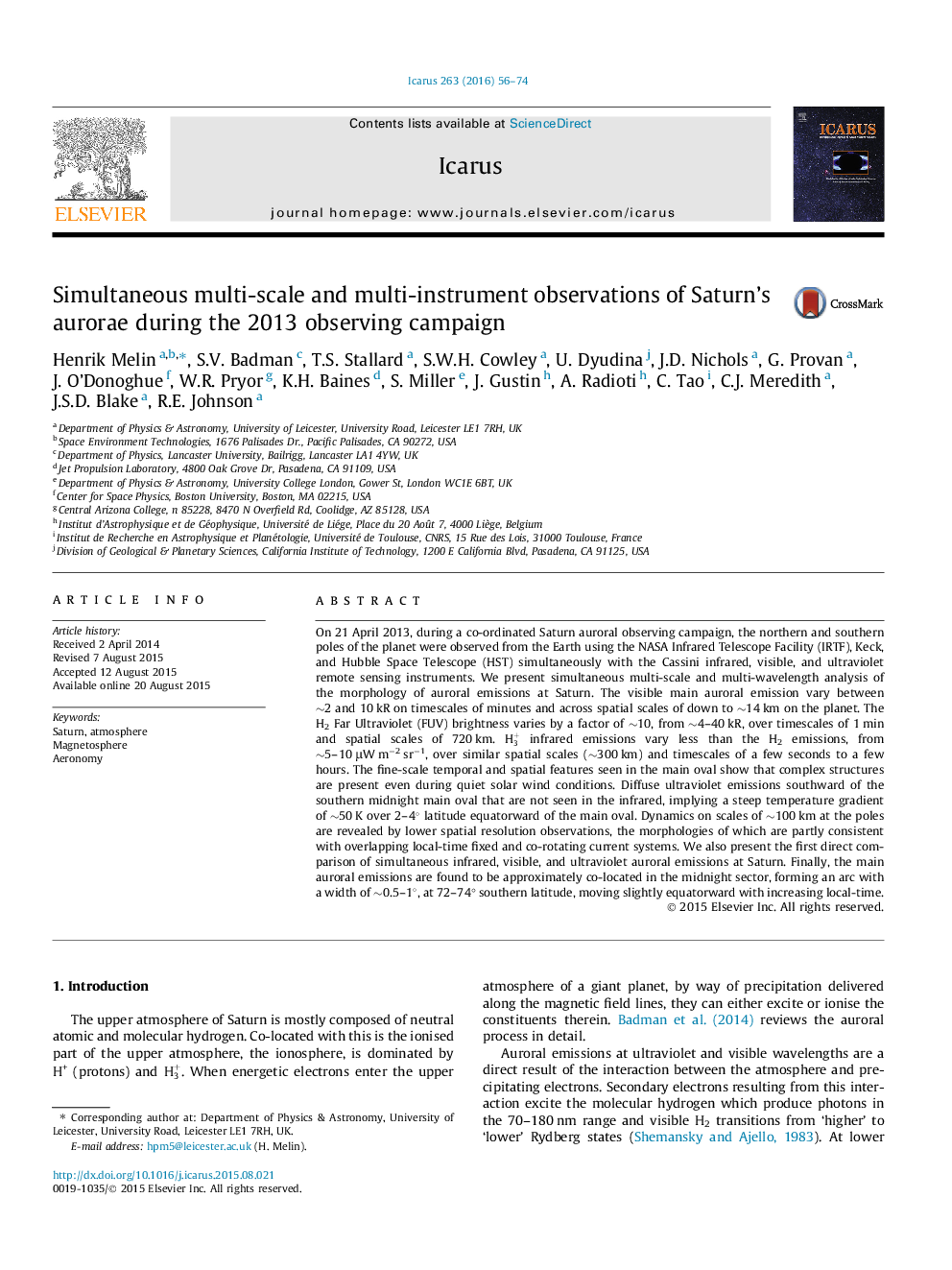| کد مقاله | کد نشریه | سال انتشار | مقاله انگلیسی | نسخه تمام متن |
|---|---|---|---|---|
| 8135883 | 1523527 | 2016 | 19 صفحه PDF | دانلود رایگان |
عنوان انگلیسی مقاله ISI
Simultaneous multi-scale and multi-instrument observations of Saturn's aurorae during the 2013 observing campaign
ترجمه فارسی عنوان
مشاهدات همزمان چندین مقیاس و ابزار چند ضلعی آئوری زحل در طول مبارزات انتخاباتی 2013
دانلود مقاله + سفارش ترجمه
دانلود مقاله ISI انگلیسی
رایگان برای ایرانیان
کلمات کلیدی
موضوعات مرتبط
مهندسی و علوم پایه
علوم زمین و سیارات
علوم فضا و نجوم
چکیده انگلیسی
On 21 April 2013, during a co-ordinated Saturn auroral observing campaign, the northern and southern poles of the planet were observed from the Earth using the NASA Infrared Telescope Facility (IRTF), Keck, and Hubble Space Telescope (HST) simultaneously with the Cassini infrared, visible, and ultraviolet remote sensing instruments. We present simultaneous multi-scale and multi-wavelength analysis of the morphology of auroral emissions at Saturn. The visible main auroral emission vary between â¼2 and 10 kR on timescales of minutes and across spatial scales of down to â¼14 km on the planet. The H2 Far Ultraviolet (FUV) brightness varies by a factor of â¼10, from â¼4-40 kR, over timescales of 1 min and spatial scales of 720 km. H3+ infrared emissions vary less than the H2 emissions, from â¼5-10 μW mâ2 srâ1, over similar spatial scales (â¼300 km) and timescales of a few seconds to a few hours. The fine-scale temporal and spatial features seen in the main oval show that complex structures are present even during quiet solar wind conditions. Diffuse ultraviolet emissions southward of the southern midnight main oval that are not seen in the infrared, implying a steep temperature gradient of â¼50 K over 2-4° latitude equatorward of the main oval. Dynamics on scales of â¼100 km at the poles are revealed by lower spatial resolution observations, the morphologies of which are partly consistent with overlapping local-time fixed and co-rotating current systems. We also present the first direct comparison of simultaneous infrared, visible, and ultraviolet auroral emissions at Saturn. Finally, the main auroral emissions are found to be approximately co-located in the midnight sector, forming an arc with a width of â¼0.5-1°, at 72-74° southern latitude, moving slightly equatorward with increasing local-time.
ناشر
Database: Elsevier - ScienceDirect (ساینس دایرکت)
Journal: Icarus - Volume 263, 1 January 2016, Pages 56-74
Journal: Icarus - Volume 263, 1 January 2016, Pages 56-74
نویسندگان
Henrik Melin, S.V. Badman, T.S. Stallard, S.W.H. Cowley, U. Dyudina, J.D. Nichols, G. Provan, J. O'Donoghue, W.R. Pryor, K.H. Baines, S. Miller, J. Gustin, A. Radioti, C. Tao, C.J. Meredith, J.S.D. Blake, R.E. Johnson,
